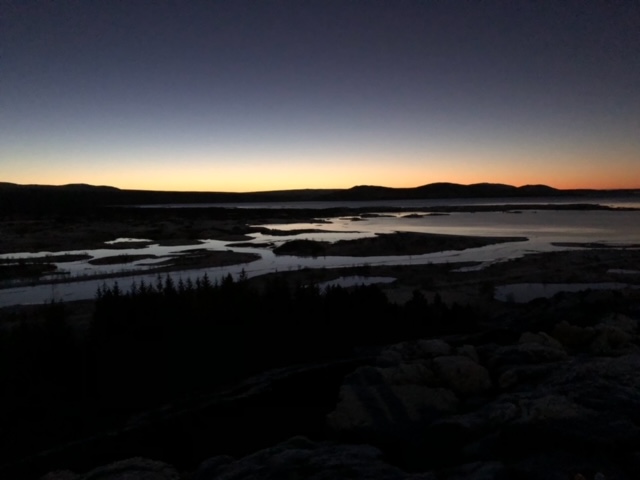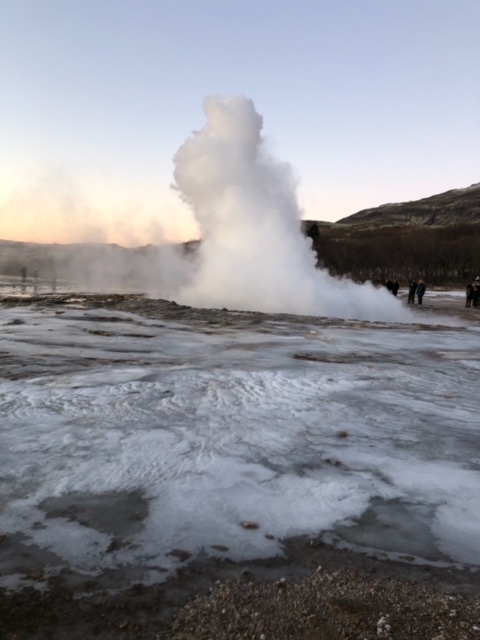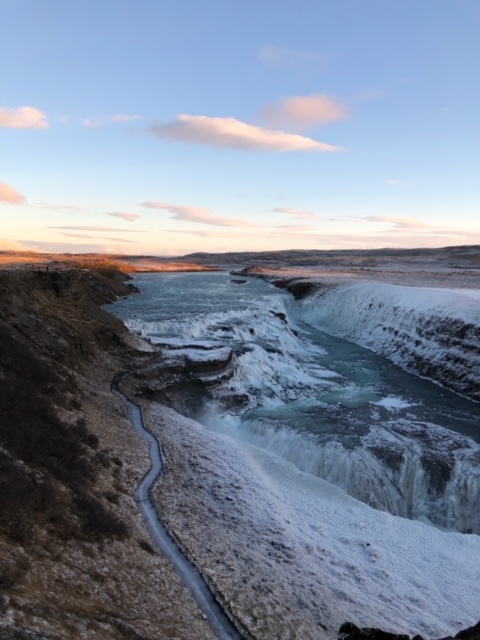The Golden Circle is one of the most popular routes for those visiting Iceland: it is in fact a route of about 300 km, doable in just one day starting from the capital Reykjavik and covering 3 of the major points of interest on the whole island . If, like us, you find yourself visiting it in winter, consider leaving very early in the morning to make the most of the few hours of light.
The Golden Circle has many attractions but is mainly known as the route linking Thingvellir National Park, the Great Geysir and Strokkur Geysir and finally Gullfoss Waterfall.
Thingvellir National Park
Thingvellir National Park is one of the most important places in the history of Iceland: in fact, one of the first, if not the first, parliament in the world was founded here in 930 and continued to play its role until 1798. Its the same name derives from this: the name Þingvellir in fact derives from the Icelandic “Þing“, parliament, and “vellir“, plain.
This park, almost idyllic due to its beauty even in the coldest season and in the early hours of light, is also very interesting from a geological point of view: in fact, here you can see gorges and faults that testify to the natural phenomenon of continental drift.
The Almannagjá fault, a real canyon between two rock walls is the point where the American and European plates move away from each other. For diving and snorkelling lovers, the National Park also offers a unique possibility.
In fact, in the Silfra fault it is possible, in all seasons of the year, to dive by swimming in crystal clear waters between the two continental plates: on one side Eurasia, on the other America.
We were unable to take advantage of this opportunity due to time constraints (the 2 – 3 hours required would have had too much impact on our program for the day) but if I had to go back in the summer I certainly wouldn’t let it get away.
Geyser in Haukadalur
The second stage of the Golden Circle is to see the Geysers of Haukaladur, a geothermal area about 60 km away from Thingvellir National Park and where, surrounded by numerous fumaroles, there are two geysers: Geysir and Strokkur. In reality, the general term “geyser” derives from the name of this incandescent jet of water.
This whole area is characterized by rivulets of boiling water that come out of the earth, fumaroles, puddles of water and mud and mineral deposits while the air is acrid with the classic smell of “rotten egg” typical of sulfur.
The Geysir, from which the area takes its name, no longer erupts. His story has in fact been fluctuating, waking up following an earthquake and then going back to “sleep”.
Despite various attempts to “bring him back to life”, including pouring soap and water into his room, nothing has been successful.
Strokkur, on the other hand, is full of life, spraying jets of boiling water up to 20 meters high every 4-8 minutes.
Gullfoss, the golden waterfall
The waterfall originates from the great river Hvítá which suddenly disappears into a large crack in the earth, producing a thick fog and frequently large colorful rainbows. In winter most of the waterfall is frozen and since the area is often very windy it is advisable to dress warmly covered if you do not want the visit ruined by the biting cold.
Around the waterfall, a path of walkways and wooden platforms has been set up from which the dramatic scenery of Gullfoss can be admired from different points of view, which is what makes it one of the most popular attractions in Iceland.
Throughout the itinerary you will be surrounded by unforgettable landscapes of valleys and, in our case, as if they were covered with snow… you can’t do anything but stop from time to time to take pictures!
Practical advices
Having little time available, we booked the excursion on Getyourguide to be sure of optimizing time and travel.
In terms of clothing, consider garments that are comfortable for movement but warm and that are suitable for both low temperatures and the wind, which is a constant presence in Iceland. We have used different thermal layers of The North Face garments but in particular I would recommend the Futurelight Triclimate jacket and above all the intermediate layer of the Thermoball jacket.


